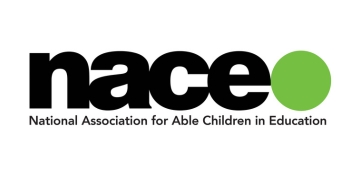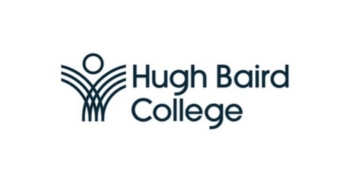Schools are fighting against local authority attempts to place children with SEND in their classes – with some even using youngsters’ education, health and care plans (EHCPs) to say they cannot meet their needs, councils say.
In submissions to the admission watchdog, they also claim academies are capping admissions “purely” to refuse in-year applications from prospective pupils, leaving them blocked out from classes for weeks.
Meanwhile, for the first time, a local authority-maintained school is also facing government intervention for refusing to enrol a child it was ordered to admit.
The Office of the Schools Adjudicator’s (OSA) annual report for 2024, published today, outlines key admission trends throughout the year, based on submissions from councils.
However the report does not include details about specific incidents or which councils are raising concerns.
It comes as Labour plans to place a new duty on councils and academies to co-operate on admissions. Local authorities’ enforcement powers will also be beefed up under the proposed schools bill.
Schools Week has rounded up the key findings.
Warning over falling rolls admission changes
The OSA dealt with 351 cases in 2024, up 20 per cent on the previous year. The number involving bids to vary admission arrangements “increased significantly” to 142. These largely consisted of “proposals to reduce published admission numbers (PANs) for primary schools”. In all, 96 applications to cut PANs were greenlit with seven rejected.
However, OSA is “concerned” about PAN reduction requests “after the closing date for applications for admission”, where it is “clear” some parents will not receive an offer if the plan is approved.
Such requests “will not usually be granted… except where refusal will cause severe adverse financial consequences for the school and where there are sufficient places for displaced children” within a reasonable distance elsewhere.
“We strongly urge admission authorities to submit approval applications before the closing date for applications and, where possible, in advance of applications being made.”
It comes after Schools Week revealed the watchdog had saved two schools from falling rolls closures after uncovering “shortcomings” in councils’ decisions.
Enforcement action ‘a first’ …
The body also considers referrals by local authority-maintained schools over council plans to direct them to admit a named pupil. It offers advice to education secretary Bridget Phillipson in cases involving academies.
The 61 referrals in 2024 “represented the highest ever annual total”. Thirty-three of them concerned looked-after children (LAC).
Of the five cases involving council-run schools, two were ordered to admit the child.
And in what the report describes as a “first”, one of them has continued to refuse to take on the pupil. The case was “referred to the secretary of state for enforcement”. However no further details were provided.
… and judicial review threats
The report also shows the body “received two letters before claim threatening applications for judicial review” relating to admission decisions.
One now looks unlikely to proceed, after OSA indicated it would “defend both challenges robustly”.
However, the other claim “has been lodged with the administrative court, and the claimant has been granted leave to pursue the claim”.
Schools Week asked DfE for more information about the case.
Kids in care not prioritised by faith schools …
The adjudicator heard from “a small number of local authorities” that “mentioned the effect of faith schools in their area not giving equal priority to all looked-after or previously looked-after children [PLAC] based on their religious affiliation”.
The body described the issue as “a localised problem, but a persistent one”.
One council said that, “for the first time”, a child in care did not secure their first-choice school, leaving them unable to be taught in the most “appropriate” setting for them.
The admissions criteria for the faith school “placed children in care at a lower priority than those not in care but of a specific faith”.
Another local authority argued: “Some may be disadvantaged because faith schools can give priority to children of the faith above looked-after and previously looked-after children not of the faith.
“The [admissions] code should be revised to ensure that more looked-after and previously looked-after children are able to access ‘good or ‘outstanding’ faith schools.”
… and wider calls for Ofsted clarity
Department for Education guidance states ‘good’ or ‘outstanding’ schools “should be prioritised when seeking a place for looked-after children in need of a new school”.
However, a shortage of places in these schools left some “obliged to admit what they considered to be a disproportionately high number of LAC and PLAC”.
The adjudicator would “welcome” DfE guidance on the placement of these children following the scrapping of headline grades.
Several councils also reported schools have turned LAC and PLAC away by using provisions in the admissions code that allow them to snub those they have “good reason to believe… may display challenging behaviour”.
This is despite rules stating the provision “cannot be used to refuse admission to looked after-children, previously looked-after children”.
“This is a matter that adjudicators have encountered when dealing with direction and direction advice cases for such children and it is deeply concerning,” the report said.
One in 12 councils say admissions fall short for SEND
A survey conducted by OSA showed 8 per cent of councils believe children with education, health and care plans (EHCPs) were “not well” served by admission arrangements.
Many said the main reason for this was the “short time” – just two weeks – between the deadline for EHCP revisions and the March 1 national offer date for year 7 places.
Some authorities witnessed an increase in “push back” from mainstream schools reluctant to enrol youngsters with a plan.
One told OSA: “In some instances the ECHP provides a mechanism through which a mainstream school is able to refuse to place a child… on the basis they cannot meet need.
“This route would not be available to the school should the pupil not have an EHCP.”
The 2018 model funding agreement for academies allows them to ask the education secretary “to determine whether a local authority has acted unreasonably in naming it in an EHCP”.
Despite this, 92 per cent of councils said youngsters with EHCPs were well served by school admissions arrangements.
Councils struggle with rise of in-year moves, with some blaming Labour’s VAT raid
Just over half of councils said in-year primary admissions had become more challenging since 2023. The figure rose to 72 per cent at secondary.
This was attributed to an increased demand sparked by increased exclusions and migration, fewer available school places and “a greater reluctance from schools to admit additional pupils”.
One authority reported feeling “overwhelmed” by the issue.
A small number of others identified “some children who had been educated in independent schools but were returning to the state school system due to forthcoming changes in VAT”.
In some areas, the increase in demand for in-year places was “linked to the building of new homes”.
Academies accused of ‘capping’ places to refuse kids …
On the issue of in-year places, problems with schools outside council control –including those in academy trusts – were “raised by most, if not all, local authorities”.
Several “described difficulties caused by schools choosing to reorganise their class structure… to address financial issues, resulting in fewer pupil places”. Many reported schools “capping” admissions for year groups outside “the normal point of entry”.
The adjudicator found such practices breach its rules.
“We cannot support any setting of admission limits in respect of year groups other than the normal year of entry unless there is a change in the code to allow this,” the report said.
One council said trusts and own admission authority (OAA) schools sometimes “reduce admission limits and close year groups… purely for the purpose of being able to refuse applications”. This forces the council to trigger fair access protocols.
“The consequence of a shortage of places, however caused, is that in some areas most FAP [fair access protocol] referrals concerned children categorised as ‘out of school for four or more weeks with no school vacancies within a reasonable distance’,” the report added.
… and meeting parents to make admissions decision
This year’s OSA report noted council calls for them to co-ordinate “all in-year admissions” have “amplified”.
Authorities described the current system “as a source of frustration for parents, a cause of delays in children securing school places, and a safeguarding concern”.
A number pointed to OAA and trust failures “to notify parents of the outcome of their application, in writing, within the 15-day limit” required by the admissions code.
Some councils reported these schools “were meeting with parents and children prior to applications being considered, with suggestions that such meetings were prompting refusals to admit”. Such an approach would breach admission rules.
A number of local authorities “raised concerns about the behaviour” of academies and OAAs.
One said OAAs, particularly those that recently joined a trust, were “not always aware of the legal requirements in relation to… admissions”.
There were also reports of schools with high levels of pupil mobility or with a less-than-good Ofsted “are refusing to admit students to avoid those transferring with attendance and behaviour issues”.















Your thoughts